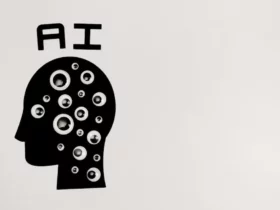In an era dominated by technological advancements, the impact of innovation on various industries is both profound and transformative. One such field that has witnessed a significant revolution is transcription services. The advent of cutting-edge technologies has not only streamlined the transcription process but has also enhanced accuracy and efficiency. From voice recognition software to artificial intelligence algorithms, the marriage of technology and transcription services has ushered in a new era of possibilities. In this article, we delve into the intricate ways in which technology has influenced and reshaped the landscape of transcription services.
The Rise of Voice Recognition Technology
One of the most notable developments in transcription services is the widespread adoption of automated transcription tools powered by voice recognition technology. These systems utilize advanced algorithms to convert spoken language into written text with remarkable accuracy. Gone are the days of labor-intensive manual transcription, as automated solutions can process large volumes of audio and video content in a fraction of the time it would take a human transcriber. This not only accelerates the transcription process but also reduces costs for businesses and organizations that rely heavily on transcription services. The precision of voice recognition technology continues to improve, making it an invaluable asset for industries such as legal, medical, and media, where accurate and timely transcriptions are paramount.
Artificial Intelligence and Natural Language Processing
The integration of artificial intelligence (AI) and natural language processing (NLP) has brought about a paradigm shift in the accuracy and precision of transcription services. AI algorithms, equipped with deep learning capabilities, can understand context, and accents, and even distinguish between speakers in a conversation. This level of sophistication enables transcription services to produce highly accurate and contextually relevant transcriptions. NLP, on the other hand, allows machines to comprehend language nuances, idioms, and colloquialisms, ensuring that transcriptions capture the intended meaning accurately. This fusion of AI and NLP not only enhances the overall quality of transcriptions but also makes them more adaptable to diverse industries and linguistic variations. As a result, businesses and professionals can rely on transcription services that not only save time but also deliver superior accuracy in capturing spoken content.
Accessibility and Collaboration
The shift towards cloud-based solutions has not only transformed the way we store and access data but has also revolutionized transcription services. Cloud-based transcription platforms offer unprecedented accessibility, allowing users to transcribe and access their files from anywhere with an internet connection. This not only enhances flexibility but also facilitates collaboration among teams, regardless of geographical location. Multiple users can work on a transcription simultaneously, making the workflow more efficient and collaborative. Additionally, cloud-based services often come equipped with advanced security features, ensuring the confidentiality and integrity of sensitive information. This technological leap in transcription services aligns with the evolving needs of a globalized workforce and contributes to a seamless and efficient transcription experience for businesses and professionals alike.
Meeting the Rigorous Demands
In academia, the demand for accurate and timely transcription services has never been more critical. Researchers, educators, and students alike often find themselves grappling with vast amounts of recorded data, ranging from interviews and lectures to research discussions. Traditional transcription methods can be time-consuming and may not meet the rigorous standards required in academic settings. This is where technology steps in to bridge the gap. For those looking for leading academic transcription services, the integration of cutting-edge technologies offers a solution. Automated transcription tools, powered by AI and NLP, ensure that the intricacies of academic discourse are accurately captured, from complex terminology to nuanced discussions. Cloud-based platforms further enhance accessibility, allowing researchers and academics to collaborate seamlessly on transcriptions, fostering a more efficient and streamlined research process. As technology continues to evolve, academic transcription services stand at the forefront, catering to the unique demands of the scholarly community and ensuring that valuable insights are not lost in transcription.
Breaking Language Barriers
The influence of technology on transcription services extends beyond linguistic nuances to embrace a more inclusive and diverse landscape. With the advent of advanced algorithms, transcription services are now equipped with enhanced multilingual capabilities. This is particularly significant in a globalized world where language diversity is the norm. Automated transcription tools can seamlessly transcribe content in multiple languages, breaking down language barriers and facilitating communication on a global scale. This not only caters to businesses operating in multinational environments but also serves as a valuable tool for media outlets, ensuring that content can be understood and shared across linguistic boundaries. The integration of technology into transcription services has thus contributed to fostering a more interconnected and inclusive information ecosystem.

Adapting to Industry-Specific Needs
The dynamic nature of industries requires transcription services to continually evolve to meet specific needs. Technology plays a pivotal role in this adaptation, allowing transcription services to customize solutions according to industry demands. Whether in legal proceedings, medical documentation, or corporate meetings, technology enables transcription services to tailor their algorithms to the unique requirements of each sector. This ensures not only accuracy in transcriptions but also compliance with industry-specific standards and regulations. As technology continues to advance, the marriage of innovation and transcription services will likely lead to further specialization, catering to the distinct needs of various professional fields.
The influence of technology on transcription services is a multi-faceted journey that encompasses automation, artificial intelligence, cloud-based solutions, academic needs, multilingual capabilities, and industry-specific adaptations. The evolution of transcription services showcases the transformative power of technology, enhancing efficiency, accuracy, and accessibility across diverse sectors. As we look to the future, the continuous integration of cutting-edge technologies into transcription services promises to redefine the way we capture, analyze, and utilize spoken content in our rapidly advancing digital landscape.









